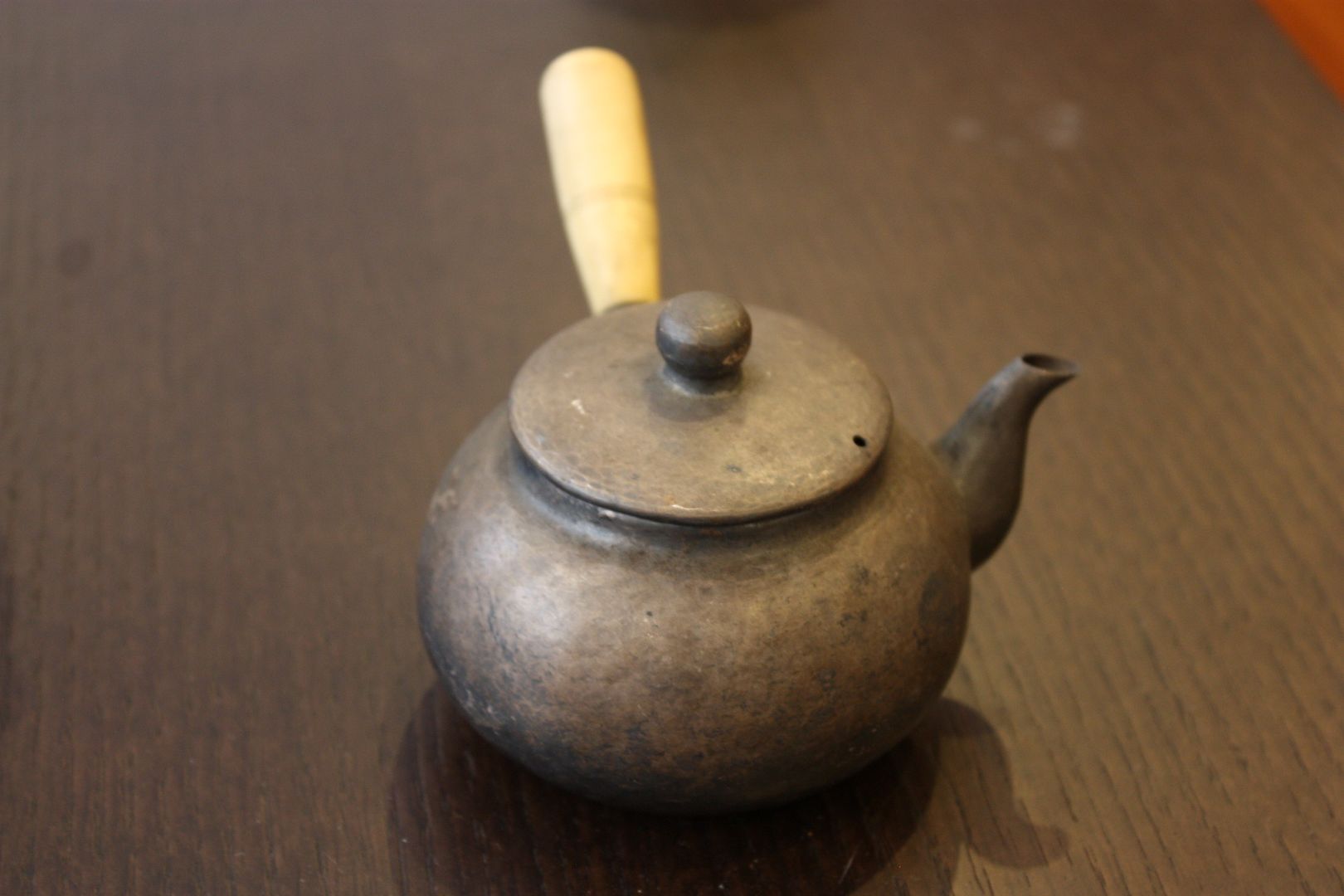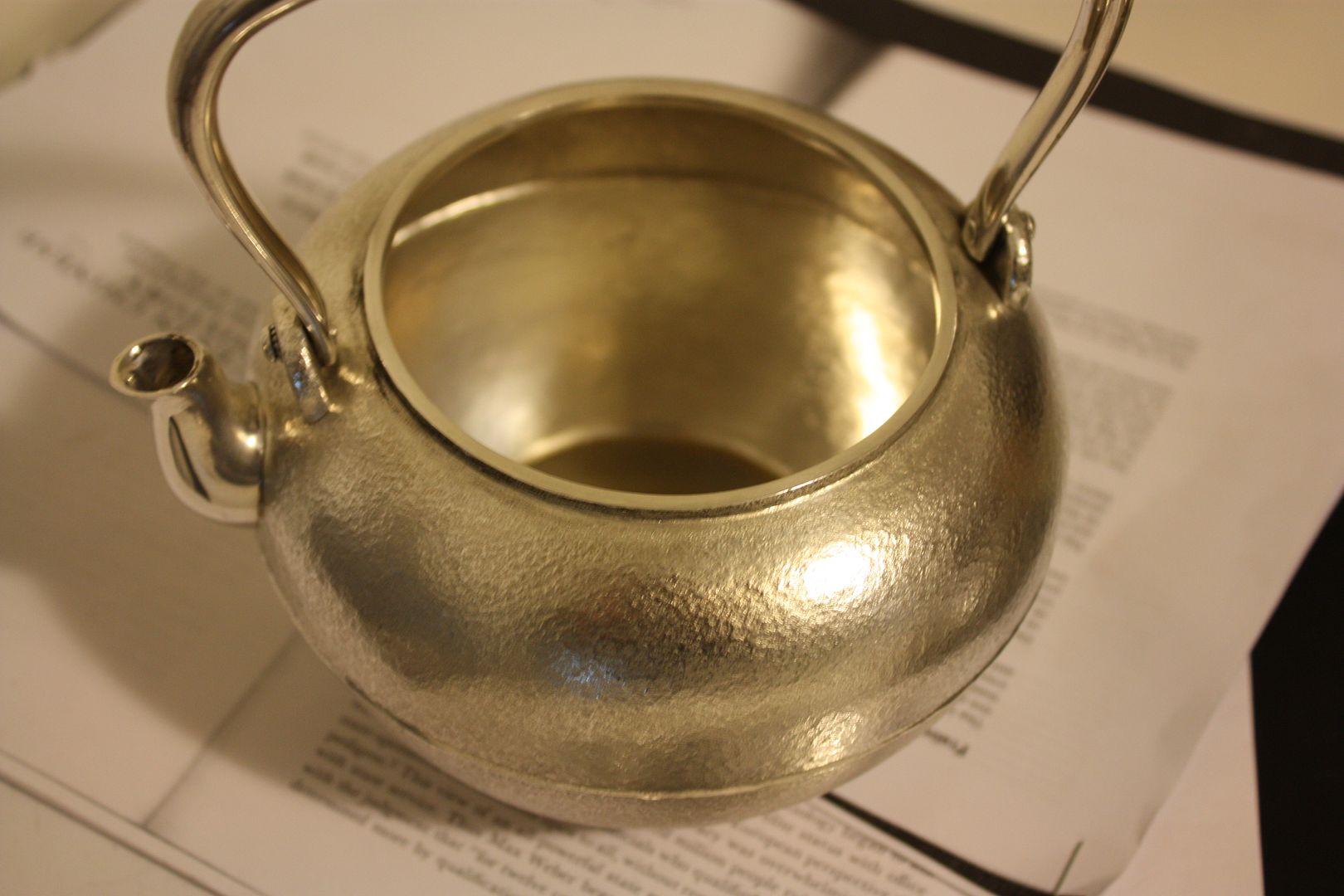I rarely repeat the same tea two days in a row, and never with the same teaware. I think one of the joys of drinking tea is to thoroughly explore all the varieties that it offers, be it young, old, roasted, green, black. Add in the variety that you get with changing teaware, and the combinations are endless.
Weather was nice today after a nasty week of rain, so I decided to drink out on the balcony while my cats decide to soak up some sun. Rather than using my usual tetsubins, I opted for one of my silver kettles instead


This is something I found on Ebay, of all places, for a rather reasonable price. It’s Korean in origin, and on one side is inscribed the words “For Mr. and Mrs. Henderson”. I’m pretty sure originally it was intended for use as a teapot, but it’s very large for a teapot, and I’d rather use it as a kettle, which is exactly what I did.
Water from silver kettles tend to accentuate the high notes in a tea. With good tea, the aroma will coat your mouth and linger for a long time. What it won’t do is to add to the body, and if the tea is sour, it may make that show up more prominently as well. So, whether it is really a good idea to use a silver kettle for the particular type of tea you’re drinking really depends. I don’t think silver kettles should be used universally for all teas. Tetsubins are much more versatile, I think.
The first tea I had today was an aged shuixian that I bought in Beijing almost three years ago.

It tasted very different from the last time when I made it a few weeks ago, using my usual tetsubin. I think I actually prefer this tea with the tetsubin — the water from a tetsubin accentuates the qualitites of this tea. It’s not the highest grade of shuixian, just some common stuff, and perhaps it only deserves the commoner treatment.
The pot I used still baffles me though. For those of you familiar with bankoyaki, it might look awfully like one, and I still don’t know if this is actually a Yixing pot or not. Although the seal says “Yixing County Mengchan Made”, I have my doubts as to its geographical origin. Maybe the potters out there can tell me if this looks like a thrown pot or a hand built one.




Not quite having enough tea, I had another, this time an aged oolong from Taiwan that I recently acquired. It’s nice and mellow, but works much better with the silver kettle. All in all, a pretty good day for tea.























Very true. I use bottled water to brew teas very rarely. But when the alternative is unuseable tap water...